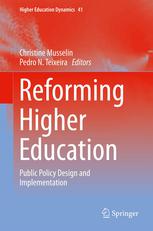

Most ebook files are in PDF format, so you can easily read them using various software such as Foxit Reader or directly on the Google Chrome browser.
Some ebook files are released by publishers in other formats such as .awz, .mobi, .epub, .fb2, etc. You may need to install specific software to read these formats on mobile/PC, such as Calibre.
Please read the tutorial at this link: https://ebookbell.com/faq
We offer FREE conversion to the popular formats you request; however, this may take some time. Therefore, right after payment, please email us, and we will try to provide the service as quickly as possible.
For some exceptional file formats or broken links (if any), please refrain from opening any disputes. Instead, email us first, and we will try to assist within a maximum of 6 hours.
EbookBell Team

4.3
88 reviewsThis book analyzes the reforms that led to a differentiated landscape of higher education systems after university practices and governance were considered poorly adapted to contemporary settings and to their new missions. This has led to a growing institutional differentiation in many higher education systems. This differentiation has certainly contributed to making the institutional landscape more diverse across and within higher education systems. This book covers this diversity. Each part corresponds to a different but complementary way of looking at reforms and highlights what can be learnt on specific cases by adopting a specific perspective. The first part analyzes the ongoing reforms and their evolution, identifies their internal contradictions, as well as the redefinitions and reorientations they experience, and reveals the ideas, representations, ideologies and theories on which they are built. The second part includes comparison between countries but also other comparative perspectives such as how one reform is developed in different regions of the same country, as well as how comparable reforms are declined to different sectors. The last part addresses the impact of the reforms. What is known about the effectiveness of such instruments on higher education systems? This part shows that reforms provoke new power games and reconfigure power relations.